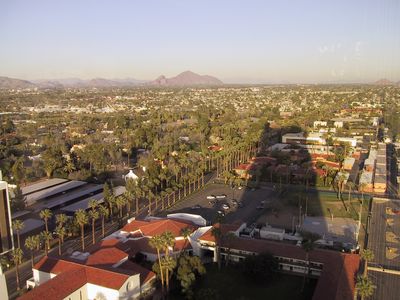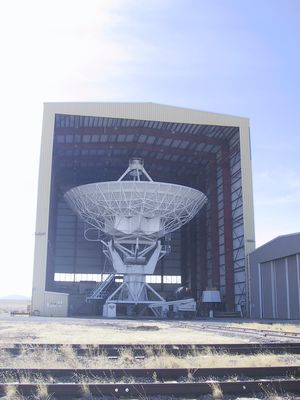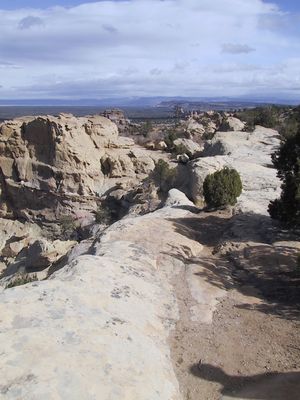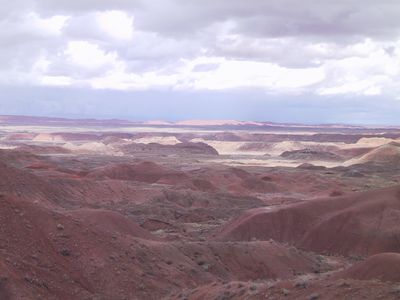

I came to Phoenix for business so that's were the story begins... Firstly, Phoenix seen from the 14th floor, a view on downtown, and Camelback mountain.


Arizona, land of the canyons... (Salt River Canyon, U.S.60)

The VLA (Very Large Array) radio observatory is located on the plains of St Augustin near Socorro (New Mexico). 27 mobile antennas, 29 meter high, 25 meter in diameter, and 230 tons each. Antenna separation varies from 1 to 36km.




Special transporters are used to move the antennas, they're able to negociate a 90-degree turn on those special crossings.



Some pictures from Santa Fe: one of the many shops, the St Francis church, the plaza.



Los Alamos is well-known for its role in the development of the atomic bomb. If you follow highway 502 to get there, you'll see the Los Alamos canyon (see picture). If you want to know more about the history of Los Alamos (why babies were born in P.O. boxes for example), you should visit the Bradbury science museum.
Bandelier National Monument is located near Los Alamos. A valley with traces of an ancient civilisation living in caves. Erosion took its toll, but there are still a lot of holes left :)


The ceremonial cave is high up in cliff face, difficult to access.



There wasn't much to see and do in Albuequerque's old town at 8 in the morning (we left Santa Fe early because of the weather forecast), just one picture of the San Felipe de Neri Church to show what it looks like.

El Malpais national monument is located near Grants just off the I40. It is an area of vulcanic origin, lots of lava and stuff. El Malpais, "the bad country" because of the hostile character.

The Petrified forest national park is a bit further down the road to Flagstaff, and also pretty interesting.
When you enter at the north entrance, your visit starts with the Painted Desert, a very colorful area.


The petrified trees are found in the southern part of the park. Wood turned into rock...


Like the saying goes: take nothing but pictures, leave nothing but footsteps, so don't take pieces of petrified trees home like too many people have done before you.
The weather forecast announced a lot of snow, we also got some when we arrived in Flagstaff. Three inches during the night and 0C/32F; only a couple of days after we left Phoenix with ~30C/86F.


The Montezuma Castle national monument is located near the I17 between Flagstaff and Phoenix.
Originally assumed to be of Aztec origin, the 5-story dwelling was named Montezuma Castle. It was actually constructed by Sinagua farmers who lived in the valley of the Verde river in the 12th century.
The visitor center shows the evolution of the american people compared to those living in western europe: here they were hunting with spears and living in cages, in europe Rome had fallen a long time ago, and the Notre Dame was being constructed.


Construction of the Palomar telescope started in the 1930s, and was completed in 1947. The exposition shows the difficulties of constructing the telescope on the top of a mountain in the middle of nowhere.



And that's it!